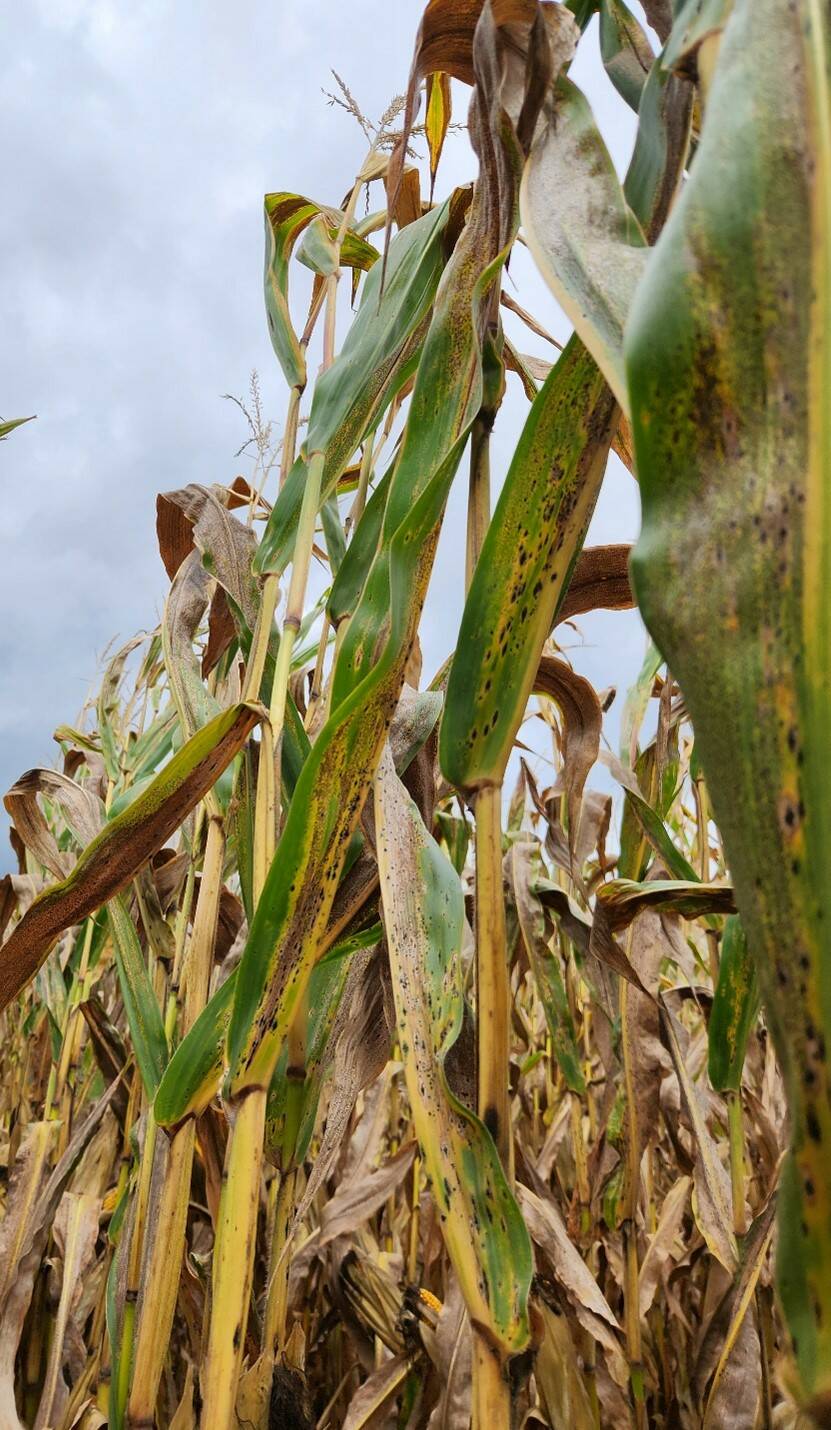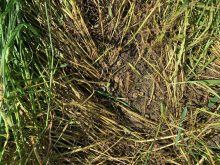Tar spot is a difficult disease to control. But it can be managed.
Since it was first identified in Ontario in 2020, “we have learned that we have the tools to effectively manage tar spot. Just keep in mind that every year is different, and 2025 is no exception,” says Albert Tenuta, field crop pathologist with the Ontario Ministry of Agriculture, Food and Agribusiness (OMAFA).
Why It Matters: Tar spot can reduce yield 20 to 80 bushels per acre if not treated.
Tenuta says scouting for tar spot is critical for mitigating the impact on corn crops, adding that host resistance is important to identify. He says that fungicides will work, but “corn will never be 100 per cent clean” and that timing is critical to get it under control.
Read Also

The forced Japanese-Canadian farmers of the Second World War
Manitoba’s sugar beet farms drew on displaced Japanese-Canadians from B.C. during the Second World War
“[Farmers] don’t want to be too early or too late with fungicides; we haven’t seen a consistent ROI on a second fungicide application. Stewardship is important, and use all these tools as well: real-time monitoring (maps), disease forecasting tools, and other resources,” he says, and suggest farmers use the resources available at www.cropprotectionnetwork.org.
Tenuta says farmers have taken proactive steps to address tar spot management strategies, including the use of fungicides, scouting and monitoring, and using high-yielding tolerant hybrids. He says high-yielding susceptible varieties can be grown, but farmers need to be aware that tar spot risk is present and fungicides will be needed to limit yield loss.
Monitoring efforts by his team have found that tar spot has been most problematic in the southwest and along the north shore of Lake Erie from Essex to Niagara. He said in 2024, south-central areas north of London to Toronto continued to see tar spot increase, with the disease confirmed for the first time in east Toronto.
“Tar spot is here and on the move. With the establishment of tar spot in more areas as well as it becoming more severe, this builds local inoculum, which increases regional risk of tar spot each year,” he says, adding that the progression is similar to other diseases producers deal with each year, such as Gibberella ear rot (DON), FHB, NCLB, and white mould.
The effects of climate change may also help spur the spread of tar spot. Tenuta noted the disease is driven by weather conditions and this will always play a significant role and influence annual risk in the province.
“This year is a great example. The extended high temperatures as well as the drier conditions have been very different from the previous four years we have had tar spot in Ontario,” he says. Spring conditions were not that much different than previous years, and Tenuta says tar spot was found at very low levels in trials in West Elgin in early July, just like the other four years.
The conditions, though, were less favourable for tar spot infection and disease development after that. “Tar spot was slowed down, and we have begun to see tar spot stroma in the traditional areas in the southwest, which have seen rain events. The Midwest U.S. corn belt has been the same, which reduces spore movement into the province.”
He said several factors are driving the spread of tar spot, including average daily temperatures of between 15 and 28 degrees Celsius and a high relative humidity of 75 per cent. He noted that long dew periods and foggy days can also increase the spread of tar spot, particularly if the plant experiences more than seven hours of leaf wetness at night.
He says black stroma will form seven to 15 days after infection with spores produced and expelled 10 to 21 days post-infection.
Tenuta says there continues to be significant research and field evaluation of corn hybrids for tar spot tolerance or potential resistance sources in Ontario and elsewhere.
“We don’t have any hybrids that are tar spot resistant, but some have shown consistent tolerance. Seed companies have done a good job with their hybrids ratings,” he says. Tenuta and Dr. Dave Hooker of the University of Guelph’s Ridgetown campus have been working with the Agriculture and Agri-Food Canada (AAFC) corn breeding program in Ottawa, in partnership with AAFC research scientists to develop resistant germplasm or sources for Ontario, with the support of Grain Farmers of Ontario and Sustainable Canadian Agricultural Partnership funding
He says results are still a few years away, but work in Canada and in the U.S., along with seed company advancements, is showing promise.
“This is a good time to remind growers that high-yielding susceptible varieties can still be used and effectively manage tar spot yield losses. Their yield potential is something growers want, of course, and it is a matter of planning to manage these hybrids with fungicides if necessary,” he says.
Tenuta believes there are some very encouraging fungicide products in development, but that these are still a few years away.
“We have good products now, and it is important to get the most out of these products, including timing (R1) and coverage. No matter how good the product, if it doesn’t get to where it needs to be, growers won’t be happy with the results,” he says. “Combining tolerant hybrids with effective, well-timed effective fungicides will provide the best management of tar spot.”
He says that fungicides need to be applied prior to or in the early stages of the disease infection and may reduce infection for two to three weeks after application. Therefore, he says, to get the greatest ROI, fungicides need to be applied when the risk of infection is high.
“Current Ontario and U.S. data indicates that fungicides applied between tasseling (VT) and silking (R1) will provide more consistent control of tar spot when the risk of infection is high. Fortunately, this is also the optimum application timing for other common leaf diseases like northern corn leaf blight and DON.”
As the disease moves across North America, Tenuta said there have been signs of evolution pointing to the tar spot pathogen Phyllachora maydis, which he says is very similar across the U.S. corn belt and Ontario. He added that work continues to better understand the genetics of the pathogen.
Looking ahead, he said the spread of tar spot into the northeastern U.S. poses concern for eastern Ontario, Quebec, and the Maritimes, adding that expansion into the Dakotas and Minnesota are potential means for movement into the Prairies.















